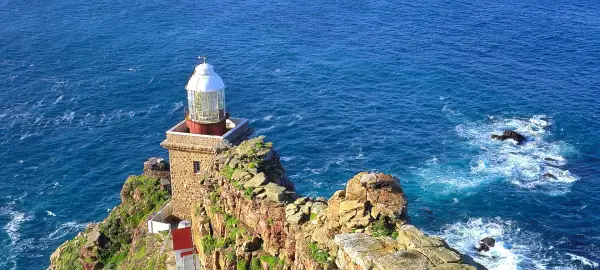This morning we leave Mkuze and head to Hluhluwe-Imfolozi Park, the oldest proclaimed nature reserve in Africa. The park is known for its rich wildlife and conservation efforts; this is the only state-run park in KwaZulu-Natal where all of the "big five" wild animals can be found (elephant, rhino, lion, buffalo and leopard).
Established in 1895, the park consists of two game reserves – Hluhluwe in the north and iMfolozi to the south, which were joined by a corridor in 1989 to form the current single park. The park is particularly famous for its role in rhino conservation, having been the home of Operation Rhino in the 1950s and 60s, which saved the white rhinoceros from extinction. Due to conservation efforts, the park now has the largest population of white rhino in the world. The park covers 960 km² of hilly topography 280 kilometres north of Durban in central Zululand, and offers visitors self-guided auto trails which provide information on both the management and natural history of this remarkable conservation success story.
We continue by road to Durban, South Africa's "Garden City." The Voortrekkers opened this area to white settlement in the early 19th century, though Portuguese navigators had been sailing this coast since the late 15th century. Vasco da Gama became the first European to sail along this coastline, naming it Natal to commemorate his Christmas Day arrival. The 1899 war between the British and Boers ended in 1910 with reconciliation and the formation of the Union of South Africa—an agreement signed in what is now Durban's modern Main Post Office.
Flight schedules permitting, we may drive through Durban briefly before heading to the airport for our flight to Gqeberha* (formerly Port Elizabeth), South Africa's fifth-largest city and third-largest port. The city's name change reflects its indigenous heritage: "Gqeberha" comes from the Xhosa and Southern Khoe name for the Baakens River flowing through the city.
Occasionally, due to ever-changing flight schedules, we may spend this night in Durban and take the early flight to Gqeberha tomorrow morning.
* The pronunciation can be a bit tricky, as the "Q" represents a "click" sound with the tongue, then 'be' (like bare), and finally 'gha' (similar to the 'G' in Afrikaans + a short 'ah'). If it's easier, the town is also colloquially referred to as "PE."
Overnight in Gqeberha (Port Elizabeth).
Included Meal(s): Breakfast and Dinner
























